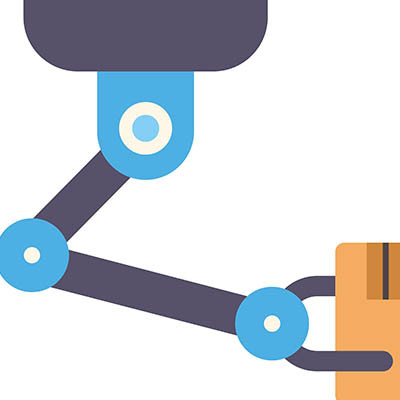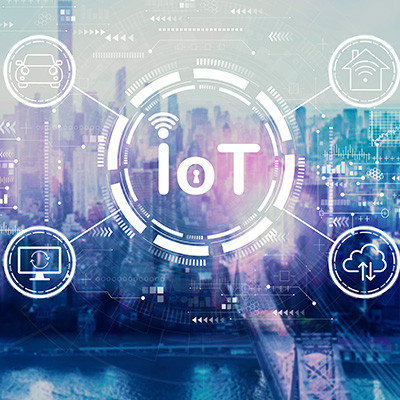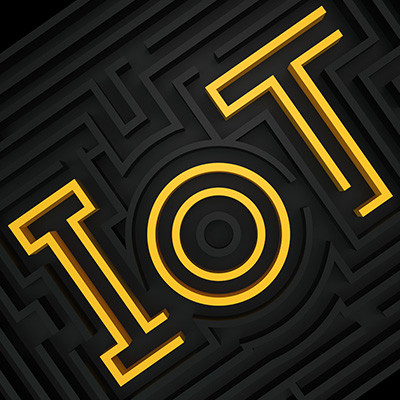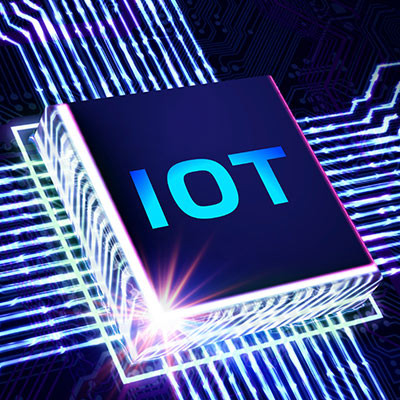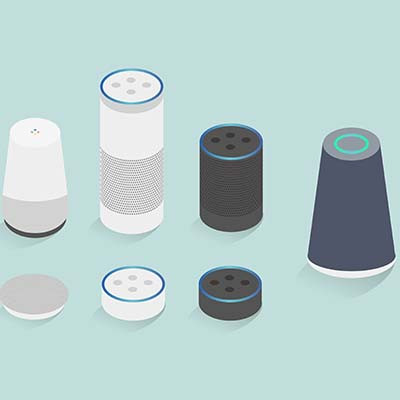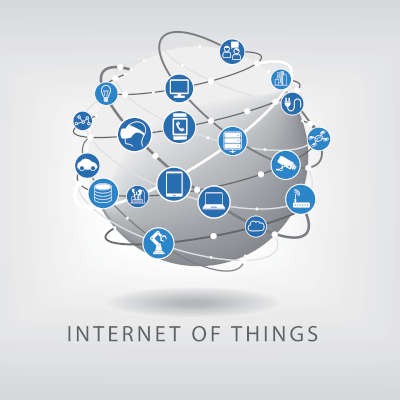Manufacturing equipment costs a pretty penny, so you naturally expect it to drive profits and yield a return on investment. Yet, how often do these machines break down and cost you more than they should? By the time the red light turns on that tells you something’s wrong, you’ve already wasted precious time that you could have been saving with proactive, preventative maintenance.
PCSOFT Blog
The Internet of Things is pervasive in the way that many devices which you might not expect to be connected are, in fact, connected to the Internet. Smart speakers, smartphones, smart appliances, you name it, could potentially be a security threat if left unchecked. This doesn’t just go for businesses, either; even consumer smart devices could leave users vulnerable.
The Internet of Things has been one of the most talked about technologies over the last decade. So much so, that many businesses want to do what they can to utilize this new technology for the betterment of their business. The Internet of Things, however, can have positive and negative effects on your business. In this month's newsletter, we'll take a look at the good and bad the IoT can provide for your business.
The Internet of Things (IoT) has become one of the fastest growing technology industries in history. As of 2022, there are over 14 billion connected devices on the IoT with the number to reach over 20 billion by the end of 2026. With that many devices, you may find yourself wondering what types of devices they are. Today, we’ll go through exactly what devices make up the IoT and how to get the IoT to work for your business.
With the Internet of Things growing at a rapid pace, there are many opportunities for your business to reap considerable rewards from its proper utilization. It can automate certain processes, save you capital, and mitigate human error. Let’s examine how your business can use the Internet of Things to its benefit without breaking the bank.
There are a lot of “smart” devices out there—over 35 billion and counting—and more and more are being connected to the Internet all the time. These endpoints, often called the Internet of Things, are known as vulnerabilities to hackers, as most devices don’t offer the type of comprehensive security that they need to keep from being problematic. What might surprise you, however, is that the primary exploit comes from devices that ironically are thought of as security devices: The ones found in a smart home.
Many people use smart speakers throughout their day-to-day lives, whether it’s as a personal assistant or to control their home entertainment system. However, one of the topics up for discussion is how secure these devices actually are and whether or not we should be concerned about them. Just how secure are your smart speakers and what can you do about their security?
Smart devices have enabled individuals and businesses to push the limits of connectivity, allowing them to have unprecedented amounts of control over their offices and homes. People can turn down their thermostats or lock the front door with the click of a button, as well as control how much power their homes consume. However, security is a pain point for these types of connected devices.
A lot has been made about smart technology over the past few years with one major takeaway: it is far too risky to deploy. Security problems with Internet of Things (IoT) devices have been widely discussed and it has kept organizations from deploying technology that can really help their business. Let’s take a look at some of the technologies that your business can use to streamline your operations.
One of the biggest questions that was routinely asked to IT administrators before the COVID-19 pandemic shifted everything was, “How can we use the Internet of Things to Improve Your Business?” The answer isn’t as simple as you might think. Today, we will look at what benefits the Internet of Things can present to you and whether or not they can make a difference for the average small business.
A few years ago, there was a decision made to make a concerted effort by manufacturers to create their products, but to also create those same products with “smart” technology inside. Basically, because of the rampant innovation of Internet-connected systems, devices, appliances, and knick-knacks of all types we have to ask the question: Are we being dumb for using all these smart devices?
For the amount that you hear the phrase “the Internet of Things” you’d think that it is the newest Ben and Jerry’s flavor. We hear it everywhere. On the television: “the Internet of Things”. In the stores: “the Internet of Things”. Even on the Internet there is this constant stream of consciousness that references the Internet of things. Well, today we are going to look at the Internet of Things as it is, and why you need to listen to what everyone is saying about the Internet of Things.
The Internet of Things has forced businesses to think about the threats that countless mobile devices pose when they access a network, and it’s not something that is going away anytime soon. How can your business be as prepared as possible for the Internet of Things? We’ll give you some ideas for how you can address Internet of Things devices on your company’s network infrastructure.
In order for an individual to properly learn anything it has to be taught in a fashion commensurate with how he/she will use it in everyday life. For two decades schools, because of a myriad of factors, have been lagging behind society with the integration of technology. Nowadays, with four-of-five high school students coming to school with their own smartphone, it’s imperative that educators make adjustments to their curricula that sufficiently integrates the technologies and practices that people of the present utilize in practical life.
The Internet of Things is currently one of the most promising, yet risk-laden, information technology trends that we have today. The combination of the push for more connected devices with the lack of the security they need to remain protected, presents a considerable issue for a business’ network security. Here, we’ll examine some of the IoT’s latest trends, and how they could impact your business.
The Internet of Things is no longer a pipe dream that could become a major influencer in the technology market. It is now a reality, and as such, you need to take measures to ensure that it doesn’t become a major issue for your business. How big is the Internet of Things, truly, and how does this influence your business? Is there even any hope that you can protect yourself from it? Read on to find out.
In fact, it wasn’t so long ago that the Internet of Things became a notoriously dangerous entity, and it’s all thanks to a little something called a Distributed Denial of Service (DDoS) attack. A DDoS attack is an attack that uses many hacked devices to target a system. In this case, the devices were infected with a malware variant known as Mirai. Together, the devices created a massive botnet that was used to attack Dyn, one of the largest domain name providers out there. But the real victims of this attack were much more widespread than just Dyn--any services that relied on its services, including Amazon and Twitter, were also influenced by the attack.
This fear of a major mobile device botnet is what fuels the debate about the future of the Internet of Things and brings into question whether or not its rapid growth is something to be concerned about. When millions of devices can be connected to create a malicious network and orchestrate a massive attack that downs even the sturdiest of networks, you know that you’re dealing with a formidable force. The Mirai botnet specifically targeted devices that haven’t changed their default passwords and considering how few users actually change them in the first place, it seems that this tactic was quite successful.
If you take a moment to consider this, it seems likely that the more devices are out there, the more contentious security becomes - not just for the business environment, but on a personal level as well. Most of the devices used in this way aren’t devices that you would typically think of as having connected features. Some examples are automobiles, kitchen appliances, and even home controlling devices such as lights or thermostats. Naturally, the more devices you have in any given area, the more likely it is that there will be security issues in regard to them, so how can your organization ensure that it’s not going to be taken advantage of by a rogue botnet?
It’s incredibly important that your business prepare for any instances of potential malicious activity both on and around your mobile devices, including any connected devices on your network. If possible, change any default passwords found on your devices, and protect your devices with a mobile device management solution. All of this should be in preparation of a worst-case scenario--a device being controlled remotely by an external threat.
Does your business need security solutions? PCSOFT can help. To learn more, reach out to us at 02 98730080.
There are a lot of connected devices nowadays, but not all of them have a very practical purpose. Some of the more practical uses of connected technology range from security systems to thermostats, but other technologies can’t necessarily be justified so easily. Why would a blender need to connect to the Internet? There are many more that are being added every day, which is why a lot of companies are concerned about this rise in connected technology.
In 2018 there are certain technologies most businesses have begun to embrace. Cloud computing, high-end network security, collaboration technologies, and some others have begun to be utilized by businesses, large and small, to build a more productive enterprise. Apart from these technologies, there are a few that every business person should know, if only to understand what is possible; and what is on the horizon for their company.
While the Internet of Things has increased in use, that doesn’t mean that its users necessarily trust it just yet. Furthermore, many of these users aren’t fully aware of the actual extent that the IoT has in their lives. These results, from a recent survey by Cisco, could be pertinent to your business and how you manage it. With so many new devices connecting to your network, how can you expect them to affect operations?

